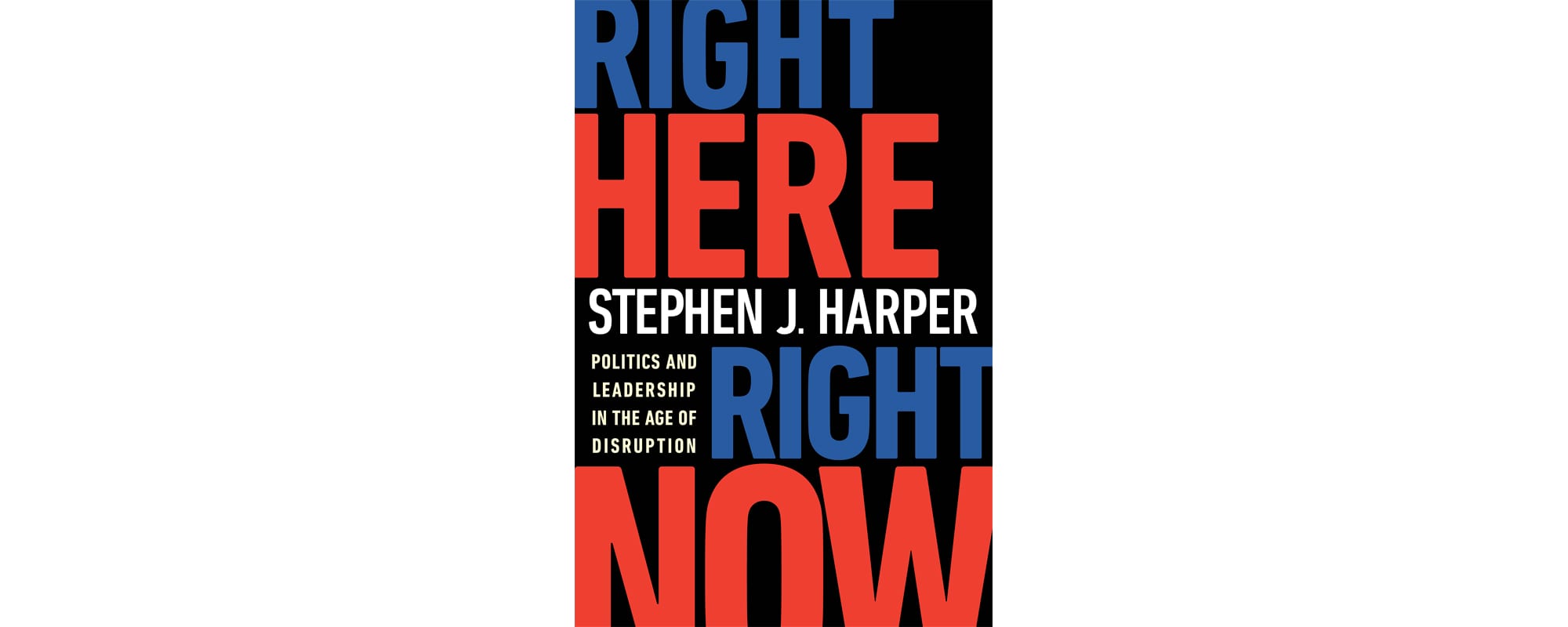热爱生活的人都关注了我们
【志公馆退休俱乐部】
只关注您的退休生活
回顾近十年的神经科学发展 ,我们会发现 ,人类从未如此逼近记忆的终极奥秘 。
一 、寻找“记忆印迹”
很久以前 ,人们就开始捕捉到单一记忆的物理痕迹 ,即“记忆印迹” 。美国心理学家卡尔·拉什利(Karl Lashley)是最初的“寻迹者”之一 。他的大部分职业生涯也都贡献给了这一研究 。
他的工作始于 1916 年 。当时 ,他在训练大鼠通过一个简单的迷宫 ,然后破坏其大脑皮层的不同位置 ,再把大鼠放入迷宫中 。这些破坏似乎都没有让大鼠忘记如何走出迷宫 。但是 ,年复一年 ,大鼠对迷宫的记忆的物理位置仍然难以捉摸 。
之后的事实证明 ,记忆印迹十分分散 ,并不能归到任何一个具体的大脑区域 。不同类型的记忆涉及的区域也不相同 。而拉什利很大程度上忽略了许多对记忆编码和检索很重要的结构 ,如位于大脑皮层外的海马体 。
现代神经科学家认为 ,特定的经历会激活一组特定的细胞 ,改变他们的基因表达 ,建立全新的联系 ,改变现有细胞联系的强度——记忆由此完成存储 。而当这些细胞再次激活 ,重演与过去经历相联系的细胞活动 ,回忆就产生了 。
以上是记忆理论上的基本框架和原则 。不过 ,要验证特定的神经元如何存储和读取特定的信息 ,难度很大 。近几年神经科学家们掌握了标记 、激活和沉默特定动物神经元的新兴技术 ,才能定位组成单个记忆的神经元 。
科学家 Sheena Josselyn 也尝试过解决这个难题 。她的研究主要就是捕捉小鼠的记忆印迹神经元 。2009 年 ,她和她的团队提高了杏仁核的关键记忆蛋白CREB的水平 ,CREB是一种与记忆相关的关键蛋白 ,而杏仁体则参与处理恐惧这种情感 。她们还观察到 ,当小鼠发现了足部电击与音调之间的恐惧联系后 ,这些神经元特别容易激活 ,她后来回忆道 。研究人员推测 ,如果这些 CREB 增加的细胞是恐惧记忆印迹的基本组成部分 ,那么消除它们将消除与音调相关的记忆 ,进而消除动物的恐惧 。
因此 ,该团队用毒素来杀死 CREB 增加的神经元 ,而这些动物也就永远遗忘了上述恐惧 。
几个月后 ,洛杉矶加利福尼亚大学的艾西诺·席尔瓦(Alcino Silva)小组取得了相似的结果 ,通过生物化学抑制 CREB 水平过高的神经元来抑制小鼠的恐惧记忆 。在这个过程中 ,他们还发现 ,在任何时候 ,含有 CREB 的细胞都比其邻近细胞更容易激活 ,因为它们时刻准备着记录获取的经历 。“与此同时 ,我们的实验室发现了一些全新的东西——那就是细胞成为记忆印迹的一部分所要遵循的规则 ,”席尔瓦说 ,
二 、产生记忆
但是 ,上述的这些记忆抑制研究只勾勒出记忆印迹的一半 ,记忆印记的另一部分内容就是能不能根据需求产生记忆 。
2012 年 ,麻省理工学院的利根川进(SusumuTonegawa)小组报告称 ,他们已经创建了一个可以做到这一点的系统 。
通过遗传操作小鼠的脑细胞 ,研究人员可以用光敏蛋白标记活跃神经元 。他们把海马体内(记忆处理的重要区域)的神经元定位目标 。启动标记系统后 ,科学家们给这些动物施加电击 。对点击作出反应的神经元产生了光响应蛋白 ,使研究人员能够挑出构成记忆的细胞 。然后 ,他们使用激光触发这些神经元 ,激发小鼠的不愉快的记忆 。
在跟踪研究中 ,利根川进的研究小组将老鼠放在一个新的笼子里 ,进行足部电击 ,同时重新激活形成“安全”笼的记忆印迹的神经元 。当老鼠回到安全的笼子时 ,他们吓得僵住了 。这表明恐惧的记忆被错误地与安全区关联起来了 。其他团队的工作则表明 ,可以使用类似的技术来标记并阻止给定的记忆 。

席尔瓦说 ,各团队的工作集合构成了一个强有力的论据 ,那就是:记忆的生理痕迹(或至少是这个痕迹的关键组成部分)可以被固定在特定的神经元上 。尽管如此 ,海马体或杏仁核的一部分神经元只是足部电击恐惧记忆印迹的一小部分 ,它还涉及环境 、气味 、声音等无数其他感觉 。“可能涉及 10-30 个不同的大脑区域 ,不过这只是一个疯狂的猜测 。”席尔瓦说 。
三 、勾勒记忆的轮廓
得益于人类大脑成像技术的进步 ,研究人员开始能够缩小范围并查看构成记忆印迹的大脑活动 。作为应用最为广泛的技术 ,功能性磁共振成像(fMRI)虽然不能解决单个神经元的问题 ,但是它可以显示跨不同脑区的活动斑点 。
通常情况下 ,科学家们会用 fMRI 来挑选出对各种任务反应最强烈的区域 。但近年来 ,不少强有力的分析揭示了人们回忆特定经历时所出现的大脑活动的独特模式或特征 。
“这是认知神经科学领域最重要的革命之一 。”费城宾夕法尼亚大学神经科学家迈克尔·卡哈纳(Michael Kahana)说 。
除了 fMRI ,多体素模式分析(MVPA)技术的发展同样促成了这一革命 。这项技术也被称为脑解码 。通过将 fMRI 数据输入计算机算法 ,该算法会自动学习与特定想法或经验相关的神经模式 。
2005 年 ,当时还是一名毕业生的肖恩·波林(SeanPolyn ,田纳西州那什维尔范德堡大学的神经科学家)帮助开展了首次将 MVPA 应用于人类记忆的开创性研究 。在他的实验中 ,志愿者观看了名人 、地点和普通物体的图片 。研究人员利用这段时间收集的 fMRI 数据 ,设计了一个计算机程序来确定与观看这些类别相关的活动模式 。
随后 ,当受试者躺在扫描仪中并罗列他们能记住的所有图片时 ,特定类别的神经特征会在每次反应前的几秒钟出现 。例如 ,说出名人的名字前 ,“名人”的活动模式会出现 ,其包括激活面部处理的皮层区域 。这是当人们检索一个特定的记忆时 ,其大脑重新审视编码信息时状态的最直接的证据 。
“这是一个非常重要的论文 ,”贾尼斯·陈说 。“我相信我的工作后继有人了 。”贾尼斯·陈等人进一步提高了技术水平 ,以此来更高精确地解码记忆 。
在《神探夏洛克》研究的案例中 ,陈研究员的小组发现 ,在开幕的 50 个场景中 ,大脑活动模式可以彼此清楚地区分开来 。这些模式非常具体 ,并且区分了不包括福尔摩斯的 、室内的 、户外的场景 。
在海马体附近的几个高级信息加工中心内(如后内侧皮层) ,研究人员看到相同的场景观察模式 ,每个人后来都叙述了这一事件——尽管人们描述的具体场景不同 。他们甚至在那些从来没有看过这个电视剧的人身上也观察过类似的大脑活动 。这些人虽然从来没有看过这个电视剧 ,但是他们听到过其他人的讲述 。
“让人惊喜的是 ,当不同的人记忆相同的场景 ,并用自己的语言描述他们的记忆时 ,我们看到了相同的特征 。”贾尼斯·陈说 。结果表明 ,即使在处理记忆 、概念和复杂认知的高阶区域 ,人类的大脑组织活动也比想象中的更为相似 。
四 、融合记忆
由于新技术能让我们得以一瞥记忆印迹的真面目 ,研究人员不仅可以开始研究个体记忆如何形成 ,还可以探究是记忆如何相互作用并随着时间而改变的 。
纽约大学的神经科学家莱拉·迪维奇(Lila Davachi)运用 MVPA 来研究大脑如何分类重叠内容的记忆 。
2017 年 ,她与她实验室的研究生亚莉克莎·汤普瑞(AlexaTompary)进行了一项研究 。研究过程中 ,迪维奇向志愿者展示了 128 张物品照片 。它们每个都与四个场景中的一个相配对——比如海滩与杯子同时出现 ,然后与键盘同时出现;城市景观与雨伞搭配出现等等 。每个物品只出现在一个场景中 ,但同一场景可与许多不同的物品搭配出现 。
一开始 ,当志愿者将物品与相应的场景相匹配时 ,每个对象引发的大脑活动模式不尽相同 。但是一个星期之后 ,在志愿者回忆这项任务期间 ,对于配对在同一场景的物品 ,其神经模式变得相似了 。大脑根据共同的场景信息重组了记忆 。“这种聚类可能代表了学习信息‘要点’的开始 。”迪维奇说 。
而根据德克萨斯大学奥斯汀分校的神经科学家艾利逊·普雷斯顿(Alison Preston)的研究 ,聚类相关的记忆也可以帮助人们使用先前的知识来学习新的东西 。
普雷斯顿的研究小组在 2012 年的一项研究中发现 ,当有些人看到一对图像(如篮球和马) ,后来又看到另一组与上组有共同物品的图片(如马和湖)的时候 ,他们的大脑重新激活了与第一对相关的模式 。这种重新激活似乎将这些相关的图像对绑定在一起;在学习过程中 ,表现出这种效果的人们更好地认识到两个没有出现在一起的图像(在这种情况下 ,篮球和湖)之间暗含的联系 。
“大脑正在建立的联系超越了我们直接观察的信息和知识” ,普雷斯顿解释道 。
这个过程对许多日常活动很有帮助 ,例如通过推断几个已知地标之间的空间关系 ,从而在不熟悉的环境找到路 。能够联想到相关的信息来形成新的想法 ,对于创造力或想象未来的场景也很重要 。
在后续研究中 ,普雷斯顿已经开始探索记忆链接背后的机制 ,并发现相关的记忆 ,特别是接连获得的记忆 ,可以整合为一个代表 。席尔瓦的研究也与其不谋而合 。他发现小鼠也倾向于将两个接连形成的记忆联系起来 。
2016 年 ,席尔瓦的研究小组观察到 ,当小鼠在一个笼子里学会了害怕足部电击时 ,这些小鼠也开始对几个小时前去过的没有危险的笼子表现出恐惧 。研究人员表示 ,编码记忆的神经元在学习后至少五个小时内仍然保持兴奋 ,由此可能诞生部分重叠的记忆印迹 。事实上 ,在标记活跃的神经元时 ,席尔瓦的研究小组发现 ,许多细胞都参与了小鼠对于安全和不安全笼子的记忆 。
这些研究发现了可以把足部电机和笼子两个不同的记忆联系到一起 ,形成成体想法的神经生物学机制 。
“我们的记忆不只是信息口袋或是信息孤岛 ,”乔思林说 。“实际上 ,我们构建了概念 ,并且将它们之间的共同线索联系在一起 。”
然而 ,记忆这种灵活性的代价可能是形成错误或不完整的记忆:由于对另一只笼子恐怖的记忆还未散去 ,新的记忆就紧接着叠加进来 ,席尔瓦的小鼠开始害怕没有危险的笼子 。将单个经历拓展为抽象的概念和新的想法时 ,有可能会失去记忆中的某些细节 。而当人们找回个人的记忆时 ,这些可能会变得相互联系或混乱不堪 。
“记忆不是一个稳定的现象 ,”普雷斯顿说 。
现在 ,研究人员想探索具体回忆是如何随着时间的推移而演变的 ,以及如何在检索时对其进行改造 、扭曲甚至重塑 。由于能够识别和操纵动物中的个体记忆印迹神经元 ,科学家希望能够提升他们关于细胞存储和提供信息方式的理论——这些理论目前很难测试 。
“这些理论是古老而直观的 ,但我们并不知道它们背后的机制 。”普雷斯顿说 。特别是 ,通过精确定位给定记忆所必需的个体神经元 ,科学家可以更详细地研究关键神经元获取 、检索和丢失信息的细胞过程 。
“我们现在正处于一个黄金时代 ,”乔思林说 ,“我们拥有的所有技术已经可以用来探索一些留存久远的问题 。”
Source:https://www.nature.com/articles/d41586-018-00107-4
For someone who’s not a Sherlock superfan , cognitive neuroscientist Janice Chen knows the BBC’s hit detective drama better than most. With the help of a brain scanner , she spies on what happens inside viewers’ heads when they watch the first episode of the series and then describe the plot.
Chen , a researcher at Johns Hopkins University in Baltimore , Maryland , has heard all sorts of variations on an early scene , when a woman flirts with the famously aloof detective in a morgue. Some people find Sherlock Holmes rude while others think he is oblivious to the woman’s nervous advances. But Chen and her colleagues found something odd when they scanned viewers’ brains: as different people retold their own versions of the same scene , their brains produced remarkably similar patterns of activity1.
Chen is among a growing number of researchers using brain imaging to identify the activity patterns involved in creating and recalling a specific memory. Powerful technological innovations in human and animal neuroscience in the past decade are enabling researchers to uncover fundamental rules about how individual memories form , organize and interact with each other. Using techniques for labelling active neurons , for example , teams have located circuits associated with the memory of a painful stimulus in rodents and successfully reactivated those pathways to trigger the memory. And in humans , studies have identified the signatures of particular recollections , which reveal some of the ways that the brain organizes and links memories to aid recollection. Such findings could one day help to reveal why memories fail in old age or disease , orhow false memories creep into eyewitness testimony. These insights might also lead to strategies for improved learning and memory.
Hear Sheena Josselyn describe the work to picture memory in the mind.
The work represents a dramatic departure from previous memory research , which identified more general locations and mechanisms. “The results from the rodents and humans are now really coming together ,” says neuroscientist Sheena Josselyn at the Hospital for Sick Children in Toronto , Canada. “I can’t imagine wanting to look at anything else.”
In search of the engram
The physical trace of a single memory — also called an engram — has long evaded capture. US psychologist Karl Lashley was one of the first to pursue it and devoted much of his career to the quest. Beginning around 1916 , he trained rats to run through a simple maze , and then destroyed a chunk of cortex , the brain’s outer surface. Then he put them in the maze again. Often the damaged brain tissue made little difference. Year after year , the physical location of the rats’ memories remained elusive. Summing up his ambitious mission in 1950 , Lashley wrote2: “I sometimes feel , in reviewing the evidence on the localization of the memory trace , that the necessary conclusion is that learning is just not possible.”
Memory , it turns out , is a highly distributed process , not relegated to any one region of the brain. And different types of memory involve different sets of areas. Many structures that are important for memory encoding and retrieval , such as the hippocampus , lie outside the cortex — and Lashley largely missed them. Most neuroscientists now believe that a given experience causes a subset of cells across these regions to fire , change their gene expression , form new connections , and alter the strength of existing ones — changes that collectively store a memory. Recollection , according to current theories , occurs when these neurons fire again and replay the activity patterns associated with past experience.
Scientists have worked out some basic principles of this broad framework. But testing higher-level theories about how groups of neurons store and retrieve specific bits of information is still challenging. Only in the past decade have new techniques for labelling , activating and silencing specific neurons in animals allowed researchers to pinpoint which neurons make up a single memory (see ‘Manipulating memory’).
Josselyn helped lead this wave of research with some of the earliest studies to capture engram neurons in mice3. In 2009 , she and her team boosted the level of a key memory protein called CREB in some cells in the amygdala (an area involved in processing fear) , and showed that those neurons were especially likely to fire when mice learnt , and later recalled , a fearful association between an auditory tone and foot shocks. The researchers reasoned that if these CREB-boosted cells were an essential part of the fear engram , then eliminating them would erase the memory associated with the tone and remove the animals’ fear of it. So the team used a toxin to kill the neurons with increased CREB levels , and the animals permanently forgot their fear.
A few months later , Alcino Silva’s group at the University of California , Los Angeles , achieved similar results , suppressing fear memories in mice by biochemically inhibiting CREB-overproducing neurons4. In the process , they also discovered that at any given moment , cells with more CREB are more electrically excitable than their neighbours , which could explain their readiness to record incoming experiences. “In parallel , our labs discovered something completely new — that there are specific rules by which cells become part of the engram ,” says Silva.
But these types of memory-suppression study sketch out only half of the engram. To prove beyond a doubt that scientists were in fact looking at engrams , they had to produce memories on demand , too. In 2012 , Susumu Tonegawa’s group at the Massachusetts Institute of Technology in Cambridge reported creating a system that could do just that.
By genetically manipulating brain cells in mice , the researchers could tag firing neurons with a light-sensitive protein. They targeted neurons in the hippocampus , an essential region for memory processing. With the tagging system switched on , the scientists gave the animals a series of foot shocks. Neurons that responded to the shocks churned out the light-responsive protein , allowing researchers to single out cells that constitute the memory. They could then trigger these neurons to fire using laser light , reviving the unpleasant memory for the mice5. In a follow-up study , Tonegawa’s team placed mice in a new cage and delivered foot shocks , while at the same time re-activating neurons that formed the engram of a ‘safe’ cage. When the mice were returned to the safe cage , they froze in fear , showing that the fearful memory was incorrectly associated with a safe place6. Work from other groups has shown that a similar technique can be used to tag and then block a given memory7 ,8.
This collection of work from multiple groups has built a strong case that the physiological trace of a memory — or at least key components of this trace — can be pinned down to specific neurons , says Silva. Still , neurons in one part of the hippocampus or the amygdala are only a tiny part of a fearful foot-shock engram , which involves sights , smells , sounds and countless other sensations. “It’s probably in 10–30 different brain regions — that’s just a wild guess ,” says Silva.
A broader brush
Advances in brain-imaging technology in humans are giving researchers the ability to zoom out and look at the brain-wide activity that makes up an engram. The most widely used technique , functional magnetic resonance imaging (fMRI) , cannot resolve single neurons , but instead shows blobs of activity across different brain areas. Conventionally , fMRI has been used to pick out regions that respond most strongly to various tasks. But in recent years , powerful analyses have revealed the distinctive patterns , or signatures , of brain-wide activity that appear when people recall particular experiences. “It’s one of the most important revolutions in cognitive neuroscience ,” says Michael Kahana , a neuroscientist at the University of Pennsylvania in Philadelphia.
The development of a technique called multi-voxel pattern analysis (MVPA) has catalysed this revolution. Sometimes called brain decoding , the statistical method typically feeds fMRI data into a computer algorithm that automatically learns the neural patterns associated with specific thoughts or experiences. As a graduate student in 2005 , Sean Polyn — now a neuroscientist at Vanderbilt University in Nashville , Tennessee — helped lead a seminal study applying MVPA to human memory for the first time9. In his experiment , volunteers studied pictures of famous people , locations and common objects. Using fMRI data collected during this period , the researchers trained a computer program to identify activity patterns associated with studying each of these categories.
Later , as subjects lay in the scanner and listed all the items that they could remember , the category-specific neural signatures re-appeared a few seconds before each response. Before naming a celebrity , for instance , the ‘celebrity-like’ activity pattern emerged , including activation of an area of the cortex that processes faces. It was some of the first direct evidence that when people retrieve a specific memory , their brain revisits the state it was in when it encoded that information. “It was a very important paper ,” says Chen. “I definitely consider my own work a direct descendant.”
Chen and others have since refined their techniques to decode memories with increasing precision. In the case of Chen’s Sherlockstudies , her group found that patterns of brain activity across 50 scenes of the opening episode could be clearly distinguished from one another. These patterns were remarkably specific , at times telling apart scenes that did or didn’t include Sherlock , and those that occurred indoors or outdoors.
Near the hippocampus and in several high-level processing centres such as the posterior medial cortex , the researchers saw the same scene-viewing patterns unfold as each person later recounted the episode — even if people described specific scenes differently1. They even observed similar brain activity in people who had never seen the show but had heard others’ accounts of it10.
“It was a surprise that we see that same fingerprint when different people are remembering the same scene , describing it in their own words , remembering it in whatever way they want to remember ,” says Chen. The results suggest that brains — even in higher-order regions that process memory , concepts and complex cognition — may be organized more similarly across people than expected.
Melding memories
As new techniques provide a glimpse of the engram , researchers can begin studying not only how individual memories form , but how memories interact with each other and change over time.
At New York University , neuroscientist Lila Davachi is using MVPA to study how the brain sorts memories that share overlapping content. In a 2017 study with Alexa Tompary , then a graduate student in her lab , Davachi showed volunteers pictures of 128 objects , each paired with one of four scenes — a beach scene appeared with a mug , for example , and then a keyboard; a cityscape was paired with an umbrella , and so on. Each object appeared with only one scene , but many different objects appeared with the same scene11. At first , when the volunteers matched the objects to their corresponding scenes , each object elicited a different brain-activation pattern. But one week later , neural patterns during this recall task had become more similar for objects paired with the same scene. The brain had reorganized memories according to their shared scene information. “That clustering could represent the beginnings of learning the ‘gist’ of information ,” says Davachi.
Clustering related memories could also help people use prior knowledge to learn new things , according to research by neuroscientist Alison Preston at the University of Texas at Austin. In a 2012 study , Preston’s group found that when some people view one pair of images (such as a basketball and a horse) , and later see another pair (such as a horse and a lake) that shares a common item , their brains reactivate the pattern associated with the first pair12. This reactivation appears to bind together those related image pairs; people that showed this effect during learning were better at recognizing a connection later — implied , but never seen — between the two pictures that did not appear together (in this case , the basketball and the lake). “The brain is making connections , representing information and knowledge that is beyond our direct observation ,” explains Preston. This process could help with a number of everyday activities , such as navigating an unfamiliar environment by inferring spatial relationships between a few known landmarks. Being able to connect related bits of information to form new ideas could also be important for creativity , or imagining future scenarios.
In a follow-up study , Preston has started to probe the mechanism behind memory linking , and has found that related memories can merge into a single representation , especially if the memories are acquired in close succession13. In a remarkable convergence , Silva’s work has also found that mice tend to link two memories formed closely in time. In 2016 , his group observed that when mice learnt to fear foot shocks in one cage , they also began expressing fear towards a harmless cage they had visited a few hours earlier14. The researchers showed that neurons encoding one memory remained more excitable for at least five hours after learning , creating a window in which a partially overlapping engram might form. Indeed , when they labelled active neurons , Silva’s team found that many cells participated in both cage memories.
These findings suggest some of the neurobiological mechanisms that link individual memories into more general ideas about the world. “Our memory is not just pockets and islands of information ,” says Josselyn. “We actually build concepts , and we link things together that have common threads between them.” The cost of this flexibility , however , could be the formation of false or faulty memories: Silva’s mice became scared of a harmless cage because their memory of it was formed so close in time to a fearful memory of a different cage. Extrapolating single experiences into abstract concepts and new ideas risks losing some detail of the individual memories. And as people retrieve individual memories , these might become linked or muddled. “Memory is not a stable phenomenon ,” says Preston.
Researchers now want to explore how specific recollections evolve with time , and how they might be remodelled , distorted or even recreated when they are retrieved. And with the ability to identify and manipulate individual engram neurons in animals , scientists hope to bolster their theories about how cells store and serve up information — theories that have been difficult to test. “These theories are old and really intuitive , but we really didn’t know the mechanisms behind them ,” says Preston. In particular , by pinpointing individual neurons that are essential for given memories , scientists can study in greater detail the cellular processes by which key neurons acquire , retrieve and lose information. “We’re sort of in a golden age right now ,” says Josselyn. “We have all this technology to ask some very old questions.”
退休了?
快来【志公馆退休俱乐部】
一个快乐的退休俱乐部~
欢迎您来小馆儿玩!
地址:北京市海淀区学院路逸成东苑5#
??
快快联系我们吧~
和馆长一起 ,乐享新生活!
微博:志公馆退休俱乐部






留言评论
暂无留言